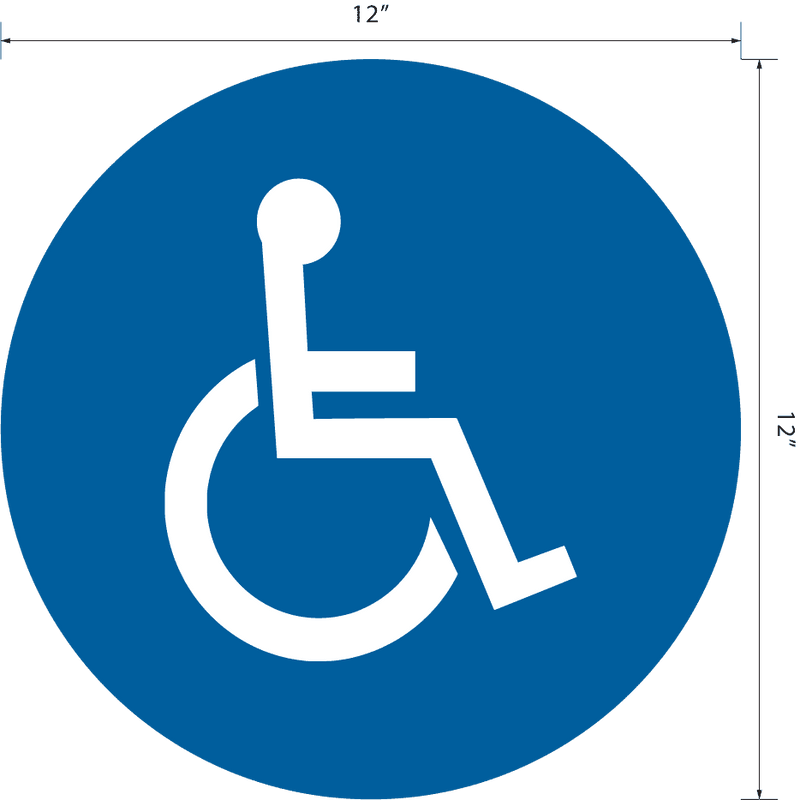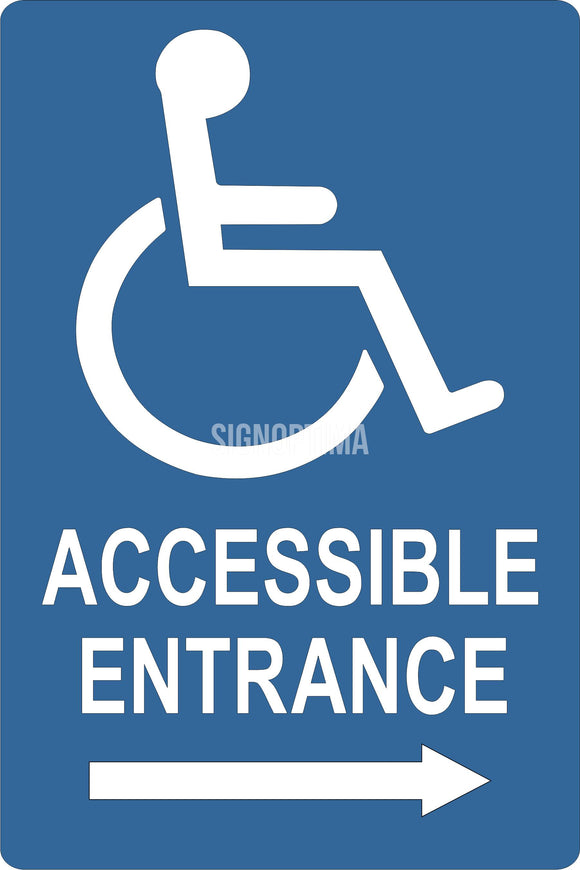Tailoring ADA Signs to Meet Your Details Needs
Tailoring ADA Signs to Meet Your Details Needs
Blog Article
ADA Signage: Making Sure Ease Of Access and Conformity in Public Spaces
ADA signs plays an essential duty in guaranteeing access and conformity within public spaces, considerably adding to a comprehensive setting for individuals with disabilities. By sticking to ADA criteria, signs not just facilitates navigation however likewise highlights a company's devotion to diversity and equal rights. As we discover the nuances of ADA signage, from tactile attributes to develop ins and outs, it's crucial to consider just how these elements integrate to promote the civil liberties of all individuals. What are the typical mistakes companies deal with in keeping compliance, and exactly how can future patterns in signage proceed to drive availability ahead?
Importance of ADA Signage
In modern-day culture, the relevance of ADA signs extends past mere compliance with legal mandates to symbolize a commitment to inclusivity and availability for all individuals. These indications are important in producing atmospheres where individuals with impairments can navigate public spaces with the very same convenience and freedom as those without disabilities. By offering clear and standard details, ADA signage guarantees that everyone can access facilities, solutions, and details without barriers.
The value of ADA signage depends on its capacity to boost the lifestyle for people with handicaps by advertising equal gain access to. It gets rid of the barriers that could otherwise hinder their capability to take part completely in area life. In addition, these indicators act as visible indications of an organization's dedication to variety and equal rights, reflecting wider social worths that champion the rights and self-respect of all people.
In addition, ADA signs plays an essential duty in public safety. By assisting individuals to exits, washrooms, and other essential facilities, it ensures that all people, despite physical capacity, can leave safely throughout emergencies. In recap, ADA signs is not simply a regulative demand however a powerful device for fostering a fair and comprehensive culture.
Key Aspects of Compliance

Positioning is vital; indicators should be mounted in locations that are quickly noticeable and reachable. Normally, signs should be installed in between 48 and 60 inches from the ground to make sure ease of access for both standing and wheelchair individuals. Responsive aspects, such as Braille, are essential for individuals with visual disabilities, supplying critical information in a non-visual style.
High-contrast shades in between the text and history are needed to boost readability for people with reduced vision. The ADA mandates particular comparison proportions to make sure clarity. In addition, personality dimension is a vital consideration, with minimum elevation demands dictated by the viewing distance to make certain readability from different angles.
Style Factors To Consider for Accessibility
Designing accessible signage calls for a careful strategy to ensure it satisfies the requirements of all individuals, especially those with disabilities. The dimension of click this site the message is just as vital, with ADA standards advising a minimal height based on seeing distance to ensure clarity.
Contrasting colors between text and background are important for visibility, specifically for people with visual disabilities. A high contrast proportion aids differentiate the text from its history, enhancing readability under numerous lighting problems. In addition, responsive components, such as Braille and elevated characters, are important for people that are blind or have reduced vision. These elements need to be found at a regular height and setting to guarantee very easy gain access to and understanding.
Moreover, the positioning of signs plays a substantial duty in accessibility. Indications must be mounted in locations that are easily reachable and unobstructed. Ensuring that signs is placed at ideal elevations and angles makes it possible for all users, including those using wheelchairs, to interact with them effectively.
Common Mistakes to Stay Clear Of

One more common mistake is try this the inaccurate positioning of signage. ADA standards define accurate height and location requirements to make certain that signs are obtainable and easily visible by all individuals, including those using wheelchairs. Neglecting these standards not just interferes with accessibility however likewise runs the risk of non-compliance with legal requirements.
Furthermore, inadequate comparison between text and background is a frequent oversight. Adequate comparison is vital for readability, especially for individuals with reduced vision. Designers often choose colors that are aesthetically attractive yet lack the needed comparison, providing the message challenging to determine.
Finally, some designers stop working to incorporate responsive aspects, such as Braille, which are important for individuals that are blind. Omitting these features not only results in non-compliance with ADA laws however also limits access for a sector of the population that counts on tactile information.
Future Trends in Signage
Developments in modern technology and raising understanding of inclusivity are forming the future patterns in signs design. As society ends up being extra aware of diverse demands, the combination of wise innovations into signs is acquiring grip. Digital signs, for example, is advancing to consist of interactive functions and real-time updates, which can be important in providing vibrant info in public areas. These signs usually include touch screens or gesture-based controls, allowing customers to browse content tailored to their certain demands.
Another arising pattern is the use of increased reality (AR) to boost customer experience. AR-enabled signage can overlay digital details onto the physical setting, offering aesthetically impaired people with auditory or haptic comments. ADA Signs. This modern technology not only improves access but additionally produces an interesting experience for all individuals
Sustainability is also a significant factor influencing signs patterns. Environmentally friendly materials and energy-efficient lights solutions are being prioritized to straighten with worldwide ecological goals. Furthermore, innovations in materials science are causing the growth of even more weather-resistant and long lasting indicators.
Final Thought
ADA signage plays a crucial function in assuring access and conformity within public rooms by incorporating tactile components, high-contrast colors, and strategic placement. The adherence to ADA standards not just promotes risk-free navigation for individuals with disabilities however likewise symbolizes an organization's commitment to variety and inclusivity. By staying clear of typical errors discover here and embracing future fads, public areas can continue to progress these values, ensuring that the civil liberties and self-respect of all individuals are valued and supported.
ADA signs plays an important role in assuring access and conformity within public spaces, significantly adding to a comprehensive atmosphere for individuals with specials needs. As we explore the subtleties of ADA signage, from responsive functions to design intricacies, it's vital to take into consideration exactly how these elements coalesce to promote the rights of all individuals.In modern culture, the relevance of ADA signs expands past mere conformity with legal mandates to personify a commitment to inclusivity and availability for all individuals. By supplying standardized and clear info, ADA signage ensures that everybody can access centers, services, and information without barriers.
ADA signage plays an important function in ensuring ease of access and compliance within public spaces by integrating responsive elements, high-contrast shades, and calculated positioning. (ADA Signs)
Report this page